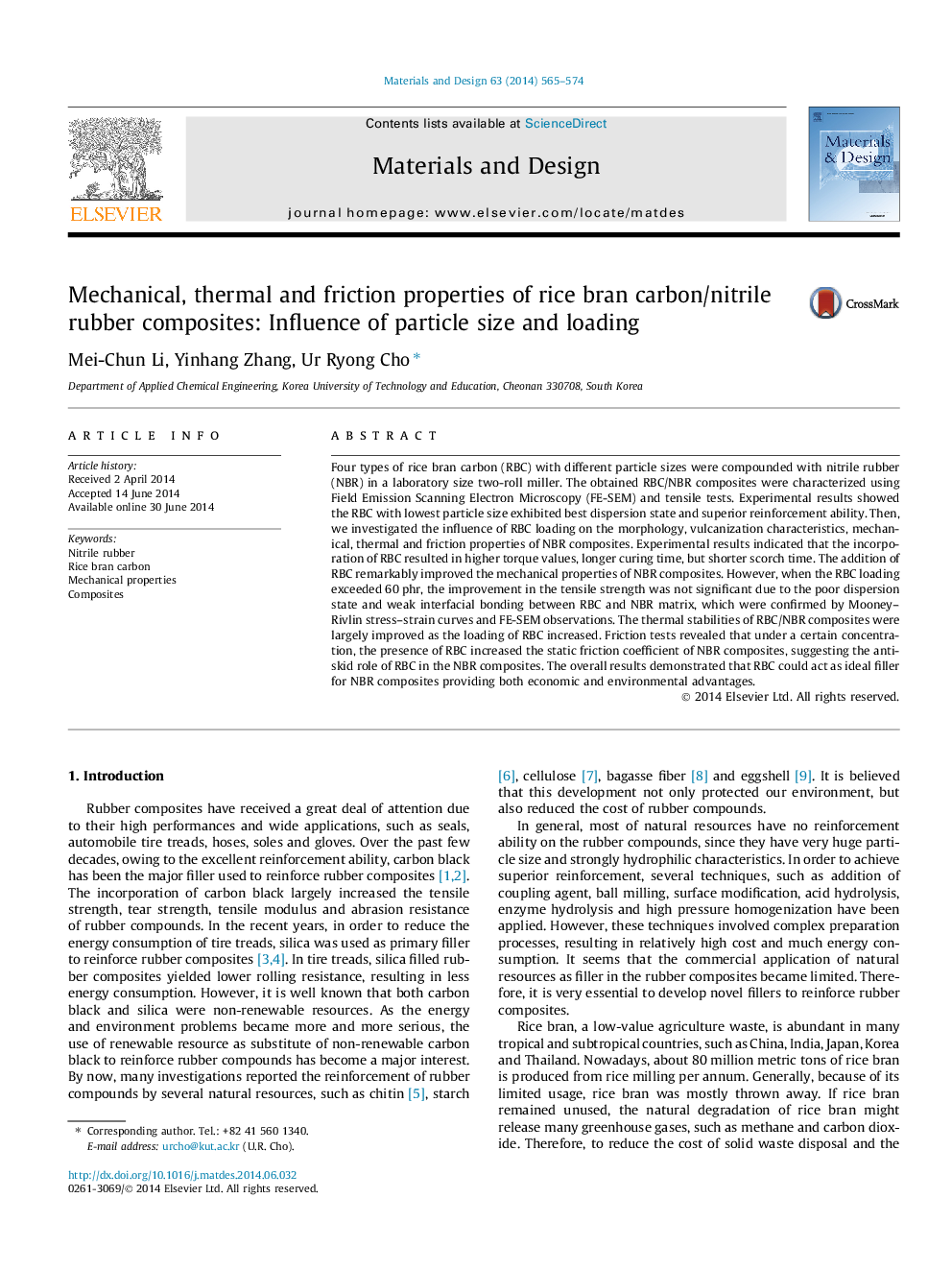| کد مقاله | کد نشریه | سال انتشار | مقاله انگلیسی | نسخه تمام متن |
|---|---|---|---|---|
| 829039 | 1470334 | 2014 | 10 صفحه PDF | دانلود رایگان |
• A novel rice bran carbon (RBC) is used to reinforce nitrile rubber.
• We study the effect of RBC particle size on the performances of nitrile rubber.
• We study the effect of RBC loading on the performances of nitrile rubber.
• The addition of RBC improves the mechanical properties of nitrile rubber.
• The addition of RBC improves the anti-skid properties of nitrile rubber.
Four types of rice bran carbon (RBC) with different particle sizes were compounded with nitrile rubber (NBR) in a laboratory size two-roll miller. The obtained RBC/NBR composites were characterized using Field Emission Scanning Electron Microscopy (FE-SEM) and tensile tests. Experimental results showed the RBC with lowest particle size exhibited best dispersion state and superior reinforcement ability. Then, we investigated the influence of RBC loading on the morphology, vulcanization characteristics, mechanical, thermal and friction properties of NBR composites. Experimental results indicated that the incorporation of RBC resulted in higher torque values, longer curing time, but shorter scorch time. The addition of RBC remarkably improved the mechanical properties of NBR composites. However, when the RBC loading exceeded 60 phr, the improvement in the tensile strength was not significant due to the poor dispersion state and weak interfacial bonding between RBC and NBR matrix, which were confirmed by Mooney–Rivlin stress–strain curves and FE-SEM observations. The thermal stabilities of RBC/NBR composites were largely improved as the loading of RBC increased. Friction tests revealed that under a certain concentration, the presence of RBC increased the static friction coefficient of NBR composites, suggesting the anti-skid role of RBC in the NBR composites. The overall results demonstrated that RBC could act as ideal filler for NBR composites providing both economic and environmental advantages.
Figure optionsDownload as PowerPoint slide
Journal: Materials & Design - Volume 63, November 2014, Pages 565–574
